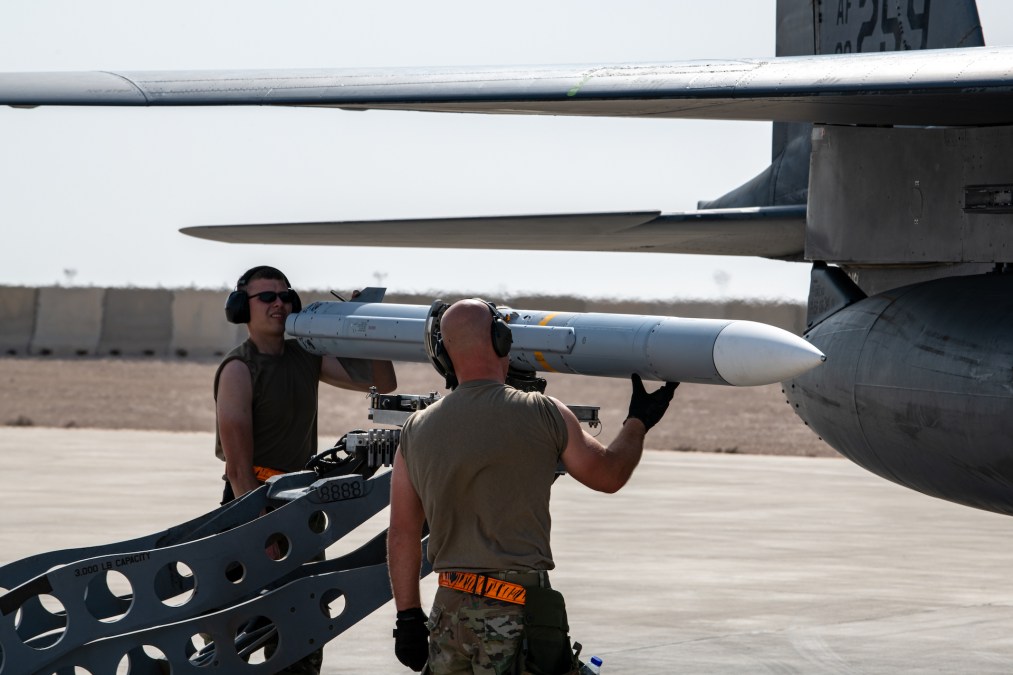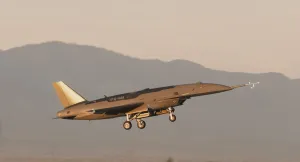Air Force integrating AMRAAM weapons onto first batch of CCA drones

Raytheon is working with the Air Force to integrate the AIM-120 Advanced Medium Range Air-to-Air Missile (AMRAAM) onto its first increment of loyal wingman drones known as collaborative combat aircraft (CCA), a company official confirmed.
The contractor is partnering with the service and the two vendors competing in the ongoing development-for-production phase of CCA Increment 1 to incorporate the weapons onto the drones, Jon Norman, Raytheon’s vice president of air and space defense systems requirements and capability, said during a meeting with reporters Tuesday. News about plans to equip the uncrewed systems with the missile was first reported by Air and Space Forces Magazine in July.
“We’ve been working with the Air Force with their collaborative combat aircraft, and they’re integrating that onto the [Increment 1]. They’re still in the early requirements phase for CCA [Increment 2],” Norman said.
Part of the Air Force’s Next Generation Air Dominance (NGAD) family of systems, CCA drones are intended to fly alongside the service’s fifth- and sixth-generation manned aircraft in the future. The department intends to rapidly produce the uncrewed platforms to begin testing them in operations before the end of the decade.
The Air Force is planning to design and field the systems in increments in order to gradually iterate and improve their capabilities. Service leaders have said the unmanned aircraft will carry a range of equipment in order to accomplish multiple missions — from intelligence, surveillance and reconnaissance (ISR) to offensive strike.
Norman said the Air Force has set the AIM-120 as “a threshold weapon” for the drones.
“Now you can have a controlling aircraft — whether that’s an [F-35 Lightning II] or an [F-22 Raptor] — that can use those collaborative combat aircraft as a force extender, so they have more munitions available,” he said. “With the collaborative combat aircraft, now it has a platform out there that’s in the right position, survivable, and it can employ AMRAAMs guided and directed by the F-35 or by the F-22.”
In April, Anduril and General Atomics were awarded contracts to create detailed designs, manufacture and conduct flight tests for the first batch of CCAs, known as Increment 1. Once the service nails down its preferred design, the two companies — as well as any other vendors interested — will be able to compete for the final production contract expected to be made in 2026.
The service will display full-scale models of both company’s prototypes during AFA’s Air, Space and Cyber conference in September, Secretary of the Air Force Frank Kendall said Tuesday during the U.S. Chamber of Commerce’s Global Aerospace Summit.
Raytheon has spent significant time redesigning the missile to add improvements in range, navigation and anti-jamming technology. Although the company did not share which specific variant of the AMRAAM is being integrated onto the CCAs, the range of the newest variant — the AIM-120D — is estimated to be around 100 miles.
Norman said the contractor is currently preparing for a round of tests under the Air Force’s Weapon System Evaluation program to further demonstrate the AMRAAMs range for extended shots. The company didn’t alter anything with the missile’s propulsion system, but changed how it flies for long-range shots so that it has more kinetic energy when it hits targets, he explained.
“What that does is it brings us back into parity, and we actually exceed a lot of the capability of all the pacing threats worldwide. So, it makes AMRAAM kind of future-proof,” Norman said.






